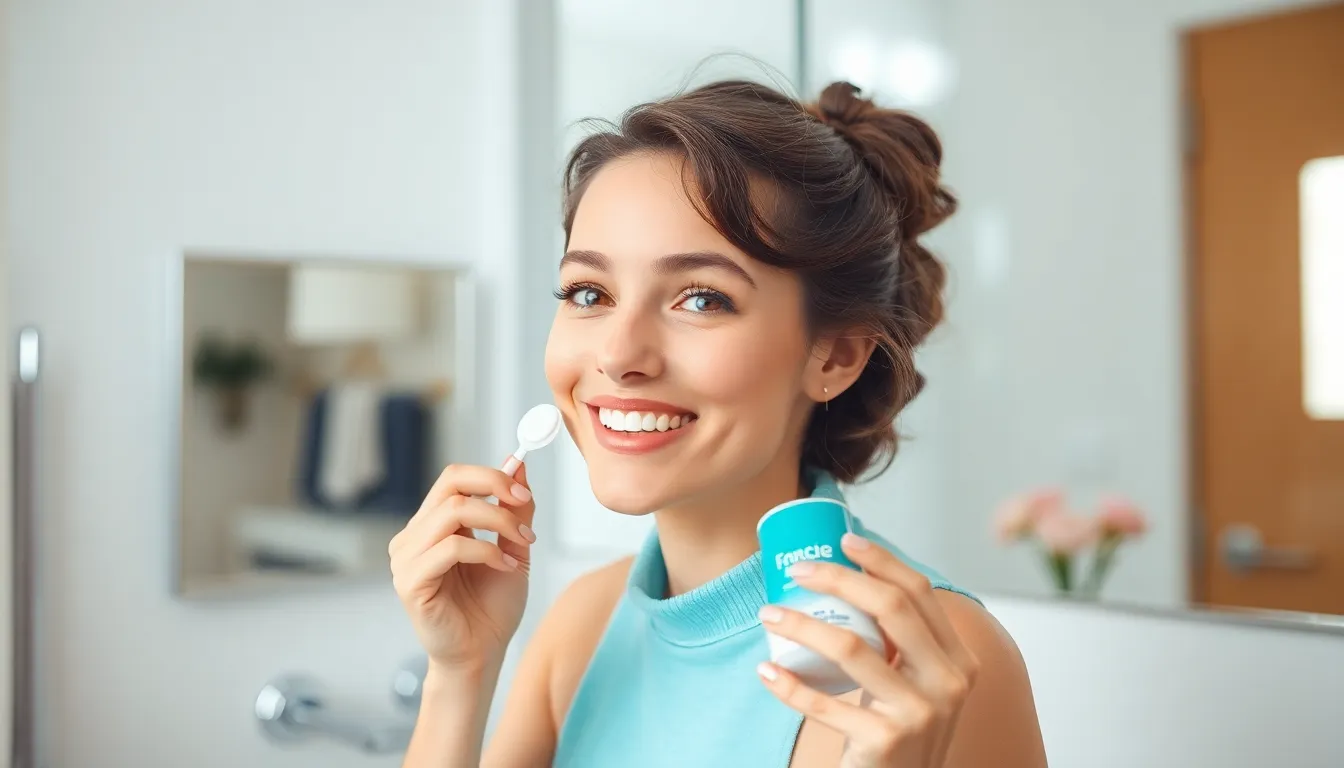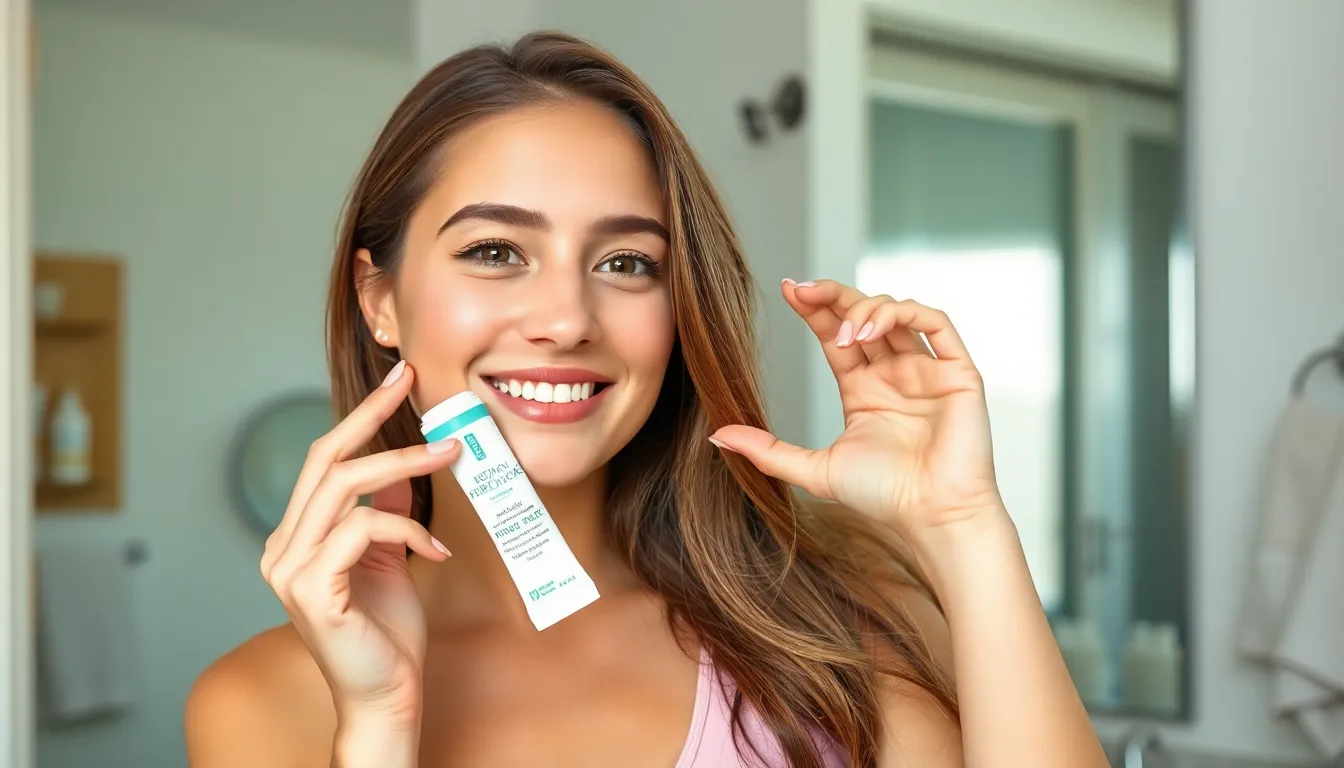Table of Contents
ToggleBenzoyl peroxide: the superhero of acne-fighting ingredients. If breakouts are crashing your skin party, it’s time to call in this powerful sidekick. With its ability to zap zits and banish blemishes, benzoyl peroxide has earned its place in countless skincare routines. But before diving in headfirst, it’s crucial to understand how to wield this potent weapon effectively.
Understanding Benzoyl Peroxide
Benzoyl peroxide serves as a potent treatment for acne, recognized for its effectiveness. This ingredient combats breakouts and enhances skin clarity.
What is Benzoyl Peroxide?
Benzoyl peroxide is an organic compound used extensively in acne medications. It appears as a white powder or thick cream, often combined with other ingredients. Many skincare products feature this ingredient because of its antimicrobial properties. It’s also available in various strengths, typically ranging from 2.5% to 10%. Professionals recommend starting with lower concentrations to gauge skin tolerance before progressively increasing as needed.
How Does Benzoyl Peroxide Work?
Benzoyl peroxide functions by targeting acne-causing bacteria. It reduces Propionibacterium acnes, a primary contributor to breakouts. By promoting exfoliation, it helps clear clogged pores, preventing new acne formation. Additionally, this compound decreases inflammation associated with acne lesions. Its keratolytic properties facilitate the removal of dead skin cells, fostering improved skin texture and clarity. Regular application often leads to noticeable improvements in skin health over time.
Benefits of Using Benzoyl Peroxide

Benzoyl peroxide offers numerous benefits for skin health, particularly in acne treatment. Its potency in combating breakouts makes it a preferred choice in skincare routines.
Effective Acne Treatment
Benzoyl peroxide effectively targets acne-causing bacteria, making it a strong ally against pimples. It reduces inflammation, which alleviates redness and swelling associated with breakouts. Additionally, this organic compound promotes exfoliation; as a result, it clears clogged pores and prevents future blemishes. Research supports its efficacy, as studies show that regular use can significantly decrease acne lesion counts. Many users notice clearer skin within a few weeks of consistent application.
Additional Skin Benefits
Benzoyl peroxide does more than treat acne. It aids in improving overall skin texture by promoting cell turnover. Enhanced exfoliation can lead to a smoother complexion. Furthermore, its antibacterial properties help prevent skin infections, reducing the risk of post-acne scars. Regular application can also help balance oil production, making it suitable for those with oily skin types. Users often report not only clearer skin but also a reduction in the appearance of excess shine.
How to Use Benzoyl Peroxide
Effective usage of benzoyl peroxide ensures better results in acne treatment. Proper techniques maximize its benefits while minimizing potential irritation.
Choosing the Right Concentration
Various strengths of benzoyl peroxide are available, ranging from 2.5% to 10%. Individuals with sensitive skin may prefer the lower concentration to reduce irritation. Those with moderate to severe acne often benefit from higher concentrations, but starting low can help gauge skin tolerance. Consulting a dermatologist can provide guidance tailored to personal skin types and conditions. Users should adjust concentrations based on their skin’s response for optimal effectiveness.
Step-by-Step Application Instructions
Preparation of the skin is essential before applying benzoyl peroxide. Start by cleansing the face with a gentle, non-comedogenic cleanser, and patting it dry. Apply a pea-sized amount of benzoyl peroxide directly to affected areas, avoiding the eyes and mouth. Frequent application can cause irritation, so beginning every other day is advisable. Gradually increase usage up to twice daily as tolerated, allowing time for the product to absorb. Moisturizers can help alleviate dryness, and using sunscreen daily protects sensitive skin from UV rays.
Potential Side Effects
Benzoyl peroxide is effective but may cause side effects. Understanding these reactions helps ensure a safer experience.
Common Reactions
Irritation occurs frequently with benzoyl peroxide use. Users often experience redness and dryness on the skin. Peeling might also happen initially, especially with higher concentrations. Some individuals report stinging or burning sensations during application. Allergic reactions, though rare, can lead to swelling or hives. Monitoring the skin’s response is crucial for users, especially those with sensitive skin.
Tips for Managing Side Effects
Gradual introduction of benzoyl peroxide is advisable to minimize irritation. Starting with a lower concentration aids in acclimating the skin. Frequent application can worsen symptoms, so it’s wise to apply every other day initially. Using a gentle, hydrating moisturizer combats dryness and maintains skin barrier integrity. Sunscreen is essential, as benzoyl peroxide can increase sensitivity to sunlight. Consulting a dermatologist for personalized advice is beneficial when side effects persist.
Conclusion
Benzoyl peroxide stands out as a powerful ally in the battle against acne. Its ability to target bacteria and promote clearer skin makes it a go-to treatment for many. With the right approach and consistent use, individuals can experience significant improvements in their skin’s appearance and texture.
It’s essential to start with lower concentrations and pay attention to skin reactions. By incorporating gentle cleansing and moisturizing into the routine, users can effectively manage potential side effects. Daily sunscreen application will further protect sensitive skin from UV damage. With patience and proper care, benzoyl peroxide can lead to a smoother and healthier complexion.







